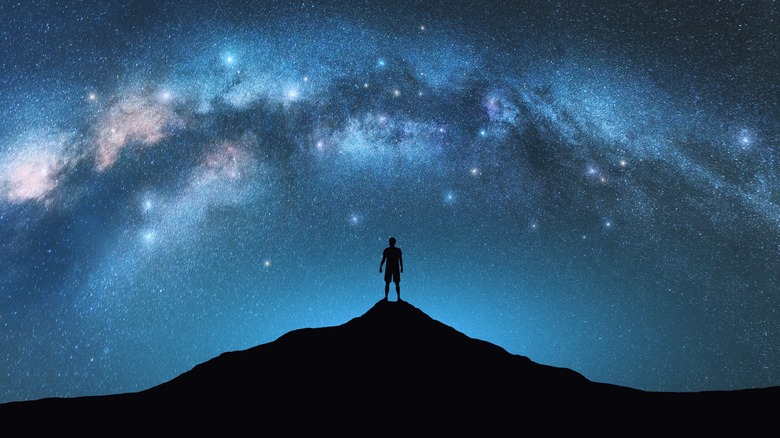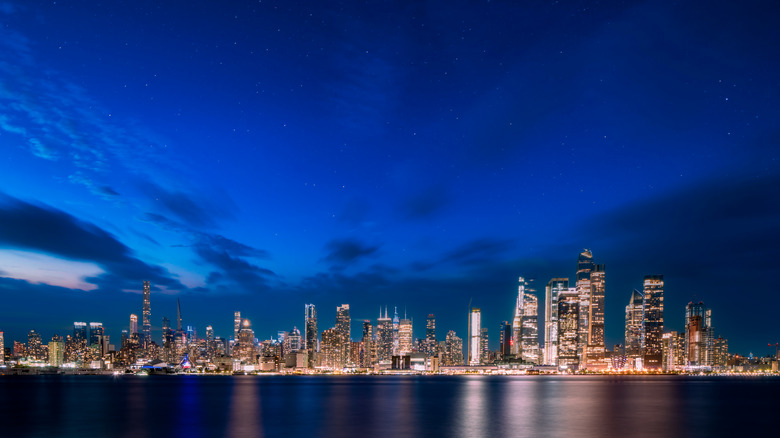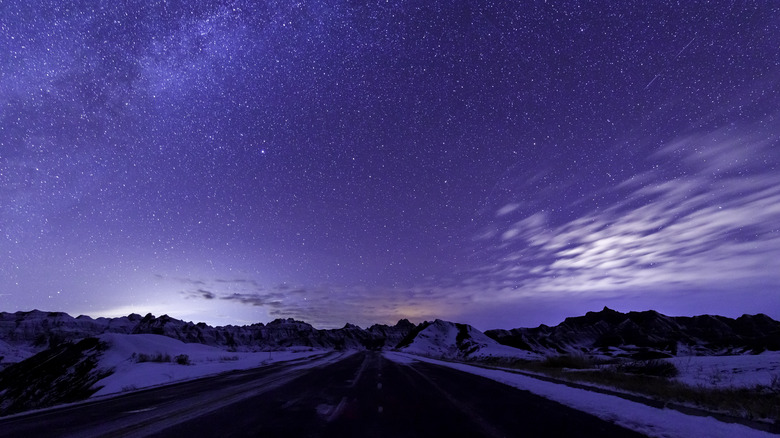The Unexpected 'Sky Grief' Caused By Too Much Artificial Light
When was the last time you saw the stars? We don't mean noticing Polaris, the extremely bright North Star, or the very obvious arrangement of the Big Dipper or Orion's Belt. We mean the entirety of the Milky Way glowing like crystalline sugar. Unless you're very old or live at an extreme north or south latitude, we're guessing the answer to that question is, "Never." So what gives? What happened to all the stars? They're still there, thankfully, but they're obscured at night by all that stuff that the sun gives us for free during the day: light. During the day starlight is consumed by the brightness of the sun, and at night it's consumed by artificial, human-made light, especially in developed countries. And if that makes you sad, you just might have "noctalgia," aka "sky grief."
As Space.com says, University of San Francisco cosmologist, Aparna Venkatesan, and astronomer at Dark Sky Consulting, John Barentine, have coined the term "noctalgia" to refer to the "collective pain we are experiencing as we continue to lose access to the night sky." Noctalgia might sound like nothing more than wistfulness for a bygone era, but it can affect people in poignant psychological ways, similar to how countries like Norway that extend above the Arctic Circle have to contend with the Midnight Sun, an annual, months-long period of incomplete nighttime darkness. In fact, Earth's night skies are filled with so much light that the planet gives off what's called "light pollution."
Pain of the loss of darkness
To give you an idea of how much artificial light Earth gives off at night, have a look at the night sky map on Night Earth. Yes, the view of our artificially lit Earth from space is beautiful in its own way, but only inasmuch as it looks like a poor reflection of the full, star-packed celestial night sky as viewed from the planet's surface. But then again, many of us don't — and can't — see the latter at all. We just see a blurred haze of pale black or thick gray cloaking the sky at night, especially if we live in a city, and doubly so if living in a neverendingly bright metropolis like New York or Tokyo. To see the real-deal Milky Way night sky, we've got to poke through Windows background pictures or something.
The amount of artificial light on Earth becomes extra staggering considering that the electric light bulb didn't exist until Thomas Edison launched it in 1879. That's only a meager 150 years of human history out of Homo sapiens' entire 300,000-year history. And yet, it's practically impossible to imagine life without abundant artificial light, including ancient iterations like candles. Our species, however, like any other, evolved within a fundamentally day-night cycle, and changes to light and darkness invariably disrupt psychology and physiology. This is especially true as the human population balloons beyond its current 8 billion, with 70% expected to live in cities by 2050.
Recovering the night
Tech Spot describes light pollution like any other type of pollution: as a byproduct of human behavior. Overall terrestrial sky brightness has continued to intensify not only because of population growth, but because of more efficient light bulbs and energy solutions, at a rate of 9.6% every year since 2011. And lest some rather proud folks living in the remote areas think they remain unaffected, think again. Tech Spot's handy night sky chart shows that not even rural areas can escape Earth's light rays shooting off into space, or light reflected back from Earth's global satellite grid. It takes a tremendous amount of effort to locate specific dark sky sites around the world.
On that note, Space.com shows how organizations like the International Dark-Sky Association (IDA) locate and classify "dark-sky reserves" according to specific, stringent criteria intended to preserve sky darkness in that location. The International Dark-Sky Association lists detailed information about certifying and maintaining such sites, including rules regarding the amount of light pointing up, overall glare, over-lighting, minimum shortwave light emissions, and more. The sites that the IDA preserves, like the area around Snowdonia National Park in Wales, or the Aoraki Mackenzie International Dark Sky Reserve in New Zealand, are beautiful enough to be nearly heart-stopping. Such measures are not only the perfect treatment for noctalgia, but a reminder of why the night skies inspired humanity for countless thousands of years of imagination, storytelling, and mythology.


